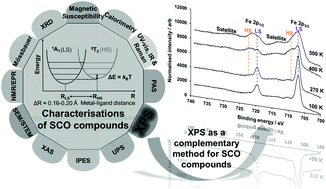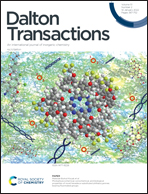A complementary characterisation technique for spin crossover materials; the application of X-ray photoelectron spectroscopy for future device applications
Abstract
Spin crossover (SCO) materials have long been studied for their inherent electronic switchability, which has been well investigated for potential application in electronic and switching devices. As the technologies for the fabrication of thin films and monolayers continue to develop at an exceedingly rapid pace, an emerging challenge for the SCO community has become the characterisation of spin transitions in the surface layers of a material, as well as understanding the origins of discrepancies observed between SCO in thin films and that of the bulk material. For the manufacture of such devices to become a reality, it is crucial to understand how spin crossover is affected by interactions with the substrate material and within thin films. As such, detailed analysis of the surface layers without interference from the substrate material emerged as a critical area of characterisation for future developments in SCO devices. In this regard, X-ray Photoelectron Spectroscopy (XPS) has emerged as a complementary technique for the analysis of SCO in the surface layers of a material, becoming an essential part of a multi-technique protocol that is driving advances in the field. Here we describe the complementary application of XPS to a variety of SCO materials, review major developments and provide illustrative examples of innovations made through surface analysis with XPS.

- This article is part of the themed collection: 2021 Frontier and Perspective articles


 Please wait while we load your content...
Please wait while we load your content...